“We Knew It Was Us Against the World”
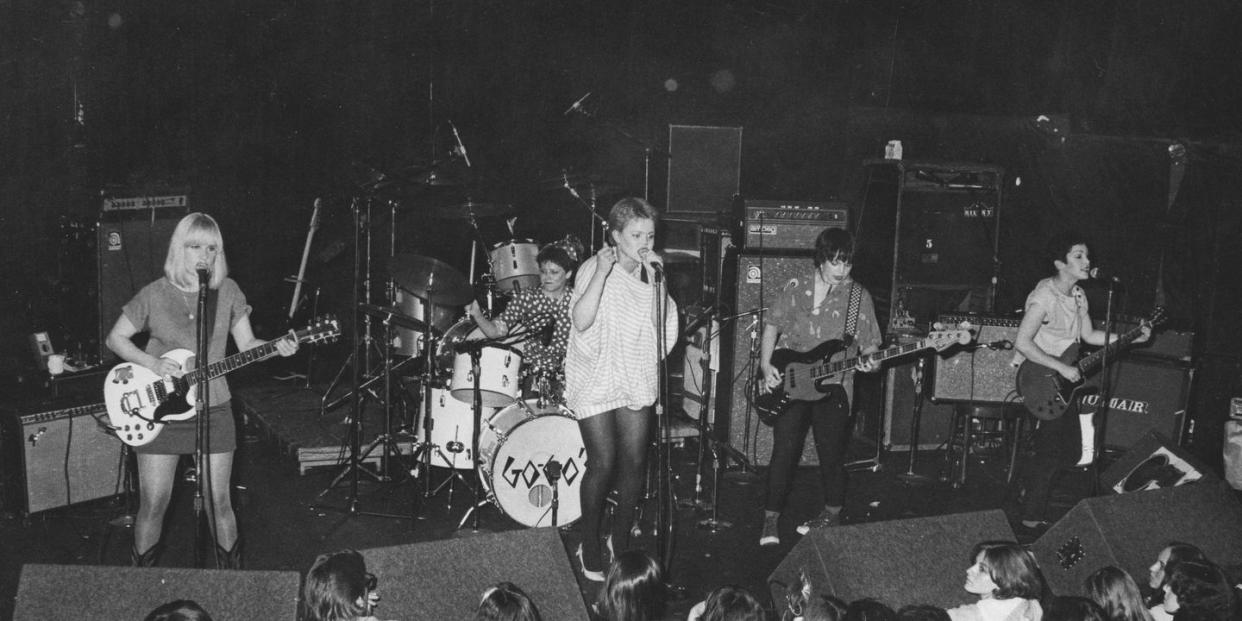
- Oops!Something went wrong.Please try again later.
- Oops!Something went wrong.Please try again later.
- Oops!Something went wrong.Please try again later.
- Oops!Something went wrong.Please try again later.
"Hearst Magazines and Yahoo may earn commission or revenue on some items through the links below."
The Go-Go’s—the 1980s pop-punk band that gave us hits like “We Got the Beat” and “Vacation”—are having a bit of a moment. Last year, a new documentary made the case that their legacy of vivacious pop-rock hits rooted in punk bone fides should be taken far more seriously, winning a slew of praise and a Critics’ Choice Award in the process. This weekend, the band will be inducted into the Rock & Roll Hall of Fame alongside Tina Turner and Carole King. And this week, drummer Gina Schock released Made in Hollywood, a book compiling the candid photos she took of her bandmates as they rose to fame through the L.A. scene.
Made in Hollywood features essays by friends of the band like Jodie Foster and captures the anything-can-happen feeling of L.A. in the early ’80s—when you might spot John Waters in the crowd of a punk show, find David Bowie or Prince in your dressing room, run into John Belushi in a recording studio, or get a celebratory telegram from Pee-Wee Herman. Recently, Schock and her fellow Go-Go Belinda Carlisle connected over Zoom with their friend Kate Pierson of The B-52’s (sporting her signature Day-Glo red hair) to take a victory lap and share their best stories from onstage, behind the scenes, and on the road.
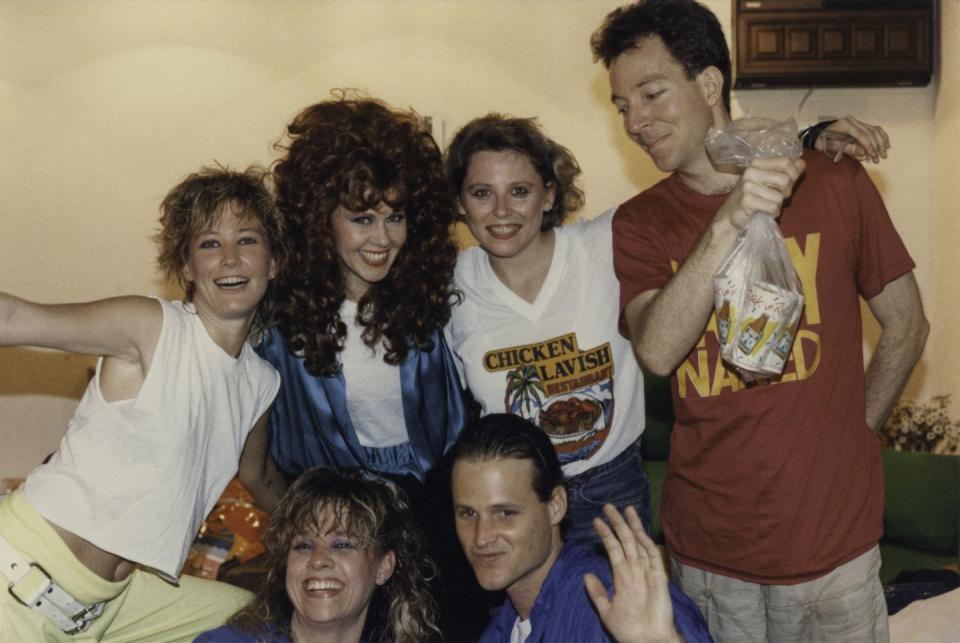
The book makes L.A. in the early ’80s seem like the center of the pop culture universe. Did it feel like that at the time?
Belinda Carlisle: We knew that we were in the middle of something special. You're lucky if that comes around once in your life. There was an energy that was palpable. Every night, there were bands playing. The whole city was just this pot of creativity.
Gina Schock: All of our friends were in bands, and we'd all get together—a gang of girls—and we would run from one club to the next. When you had your gang with you, you were just having a great time no matter where you ended up.
BC: Even if you ended up at Oki Dog with Martin Landau at three in the morning! I remember all the kids would go to Oki Dog after the shows for pastrami burritos. And Martin Landau was always there. I don't know what he was doing at three o'clock in the morning, but he was, like, just hanging with the kids. He was great.
Kate Pierson: I remember the first time I came to L.A., I just fell in love. It was such a great scene, and so thrilling to play.
GS: It was amazing to come from anywhere and land in L.A. You didn't know where to look. You didn't know where to go, because everything's happening.
Gina, I loved the story in your book where you showed up looking very 1970s and the band gave you a punk rock makeover.
BC: I remember when she walked into rehearsal, she had the frizzy hair, a CAT tractor baseball cap, and overalls.
GS: The first thing they did was cut my hair off, dye it black, and then start going to thrift stores and getting all my outfits. We spent all our time in thrift stores. I'm sure you did, too, Kate, right?
KP: Oh, yes. I was the queen of thrift. The Potter's House, in Athens, Georgia [where the B-52's lived], did not have designer clothes, but we were able to find some really wild outfits.
GS: I think we had thrift store outfits on when we went to the Grammys.
BC: We had no money, so you were forced to be creative. Looking back on pictures of us all, we looked like a million bucks for zero. I remember buying Miriam Haskell jewelry, which now is completely collectible and expensive. Schiaparelli sweaters and all this designer stuff from the '30s and '40s. And fur coats.
When you would go thrift shopping, what would you look for?
BC: I was always influenced by the whole rockabilly thing. So I was in prom dresses, and stilettos, and striped stockings, and it's like a prom queen on acid, basically. That's what I was always going for—because I was on acid most of the time, so.
GS: We were experimenting a lot, I think.
KP: You all looked just adorable. We were influenced by Diana Vreeland when she was the editor of Vogue in the ’60s. It was very futuristic and stylized. And I went from wearing no makeup at all to that black, punk, really heavy eyeliner. That cat eye. It was just a makeup extravaganza. Cheap, cheap makeup and Day-Glo clothes.
GS: You can get away with anything when you're young, you know?
BC: I remember when I worked at a gas station, at Fast Gas, and I used all my money to buy Vogue. I didn't pump, I was the cashier. But it was all DIY. My mom made a lot of my clothes too. I would buy or shoplift fabric, and she would make these wild outfits.
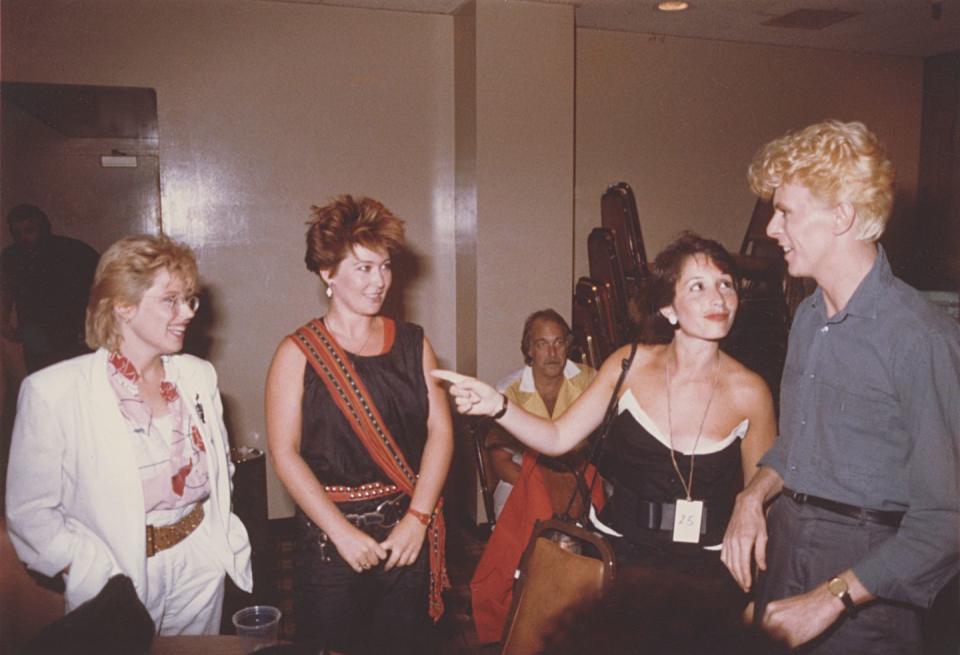
After you started making money, did you spend it on designer clothes?
BC: When I got my first credit card, I maxed it out on the first day.
GS: Oh, my God, Belinda.
BC: It was only maybe a $700 limit, but I still maxed it out. But I think we looked cuter when we had no money.
GS: I agree. I agree 100 percent, because then, we got influenced by other people in the business. And then, I think we made some bad, poor choices.
KP: We went through a phase of hats. Everyone was wearing a weird hat. I resisted the hats, but we just had such crazy hair. That was the '80s. You look back on it and you just have to love it.
Coming up as women in the male-dominated record industry, were there moments when you felt like you were taken less seriously?
BC: We never, ever had a problem, because men were afraid of us. I've had inappropriate things said to me outside The Go-Go's and with my solo career, but with The Go-Go's, nobody fucked with us.
GS: We always said we were the five-headed monster. We were all covering each other's back, all the time. And we knew it was us against the world. We were there to play, have a great time, and share our experience with our fans, so when it came to the record company and doing business, we just bulldozed through that. We had a mission. We wanted to get a record deal. We wanted to tour. And we all made it happen in a very organic way.
BC: The record company let us have 100 percent artistic control of our art, our album covers, what songs we wanted to do, and our image. We were really lucky, because a lot of people don't get that freedom, but we always had it.
KP: We did too. I'm sure they didn't even know what to do with us. They just knew it was working, so they didn't fix it.
There were so many famous people hanging around the scene, from Jodie Foster to John Waters. Do you have any really good celebrity stories?
KP: The first time we played The Mudd Club, there was William Burroughs, Frank Zappa, and David Bowie. We came up from Georgia to play New York, and we became friendly with Blondie and Talking Heads, but when we saw celebrities, we'd just sort of stare. But David Bowie was very friendly, and Frank Zappa too. William Burroughs just sat at the bar during our sound check in a long overcoat and took notes.
BC: Remember when Prince came backstage with his bodyguard, and he wanted to come and sit in our dressing room, and he just sat there?
GS: And we ignored him.
BC: Didn't say a word.
GS: We ignored him because he wouldn't talk to anybody. I mean, he was just sitting there, like Prince does, and he wasn't saying a word.
BC: Taking us all in.
KP: We made a wish list when we played the Hollywood Bowl. We invited Little Richard and Paul Reubens. And they came, and Little Richard was in the dressing room just holding court. Just friendly, laughing, and sitting in the big chair.
GS: Little Richard was a trip. Belinda, remember when he came to a rehearsal with us when we did that ... what was that for? Music awards or something?
BC: That was the American Music Awards, I think. We did "Tutti Frutti."
GS: He was wild. He was exactly what you saw on TV. He was on. He was on 24 hours a day, that guy. And the thing that really stuck out—I'll never forget—is that he was sweating profusely. Do you remember that, Belinda? How badly he was sweating? And he had a hanky with him, and he kept dabbing himself.
What was it like touring at the time?
GS: I'll tell you one thing. One of the best tours we ever did was with the B-52's. We'd go bowling, go out dancing.
KP: I remember you all slam-dancing in the clubs.
BC: Fred [Schneider, of the B-52-s] brought us to strip clubs.
GS: We kept running into Ice-T. Remember that? We'd run into him a lot. We'd say hi. There was a nod. Hey, there he is again.
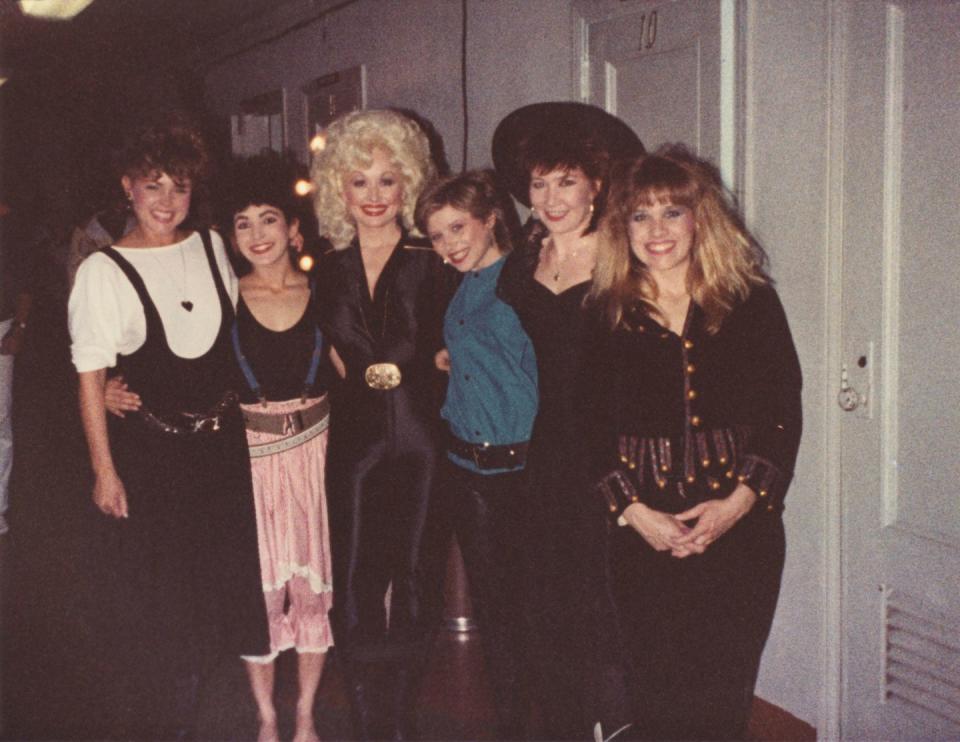
Looking at the photos, everybody looks so young. Were you ready for that level of fame?
BC: I don't think you can be. There's no manual on how to handle that kind of success.
GS: You have to navigate it, figure that out, and how you as an individual are reacting.
BC: And I mean, we did a terrible job of navigating. But you do your best when you're that young. It was a big learning experience for us all.
KP: What I love in the book is the candid photos of you guys goofing around. It shows that you had solidarity, and I think that's a defense against the kind of dislocation that stardom can bring. You're in a pack. You were in this girl group, and we had our group, and we were just very much at each other's sides.
The Go-Go's are finally being inducted into the Rock & Roll Hall of Fame. How does that feel?
BC: I don't think any of us really care about accolades or anything, but it's nice to be acknowledged. We achieved what we achieved against all odds, and did it our way. When I vote on the nominees, by the way, I always put in The B-52's, because it's long overdue. I would put in Go-Go's, check. B-52's, check. Devo, check. Because I was looking at these people on the ballot like, "Are you fucking kidding me?" With all due respect.
KP: Every time it's mentioned in the press, Fred just says [does the “Rock Lobster” voice] "I DON’T CAAAAAAAAAARE." Oh, that'll get us in …
BC: And then, there was a change of guard, and right away, we got in. My theory was that one of us said something to somebody, because we weren't very well liked there for a while. It will be fun to dress up. But I want The B-52's to be in there, too, because I mean, speaking of innovative, you guys are one of a kind.
KP: We'll keep lobbying. I'm really proud of you guys. I think it's amazing that you did the documentary. We are slowly working on our own too. We're following in your footsteps now.
How do you think about your legacy? Do you feel like it’s being reconsidered?
BC: Well, I think the documentary is the main reason why we're getting inducted into the Rock Hall. I don't think a lot of people knew our story. They assume we were put together by a Svengali, like a Simon Cowell or someone like that. People didn't know that we came from the punk scene. So I think that really changed the way that people looked at us. Like "Wow, they taught themselves how to play their instruments. They did it all themselves."
GS: I absolutely agree with that. I think it woke everybody up.
BC: If you listen to the music, it's like bubblegum melodies, but the lyrics can be very dark, and they're intelligent lyrics. People may have written the band off to be sort of vacuous and disposable, but that documentary really did change a lot of people's minds about the band.
KP: You get great reviews, then you get stinking reviews, and then you get great reviews. You just can't even look at that. You just have to keep on keeping on. And if it comes from the heart and you do it for yourselves, that's where the magic happens. What it all comes down to: Both our bands are about fun. And when you evaluate what the legacy is, when you see that people came to your show and they were able to let loose and enjoy themselves, what could be better than that?
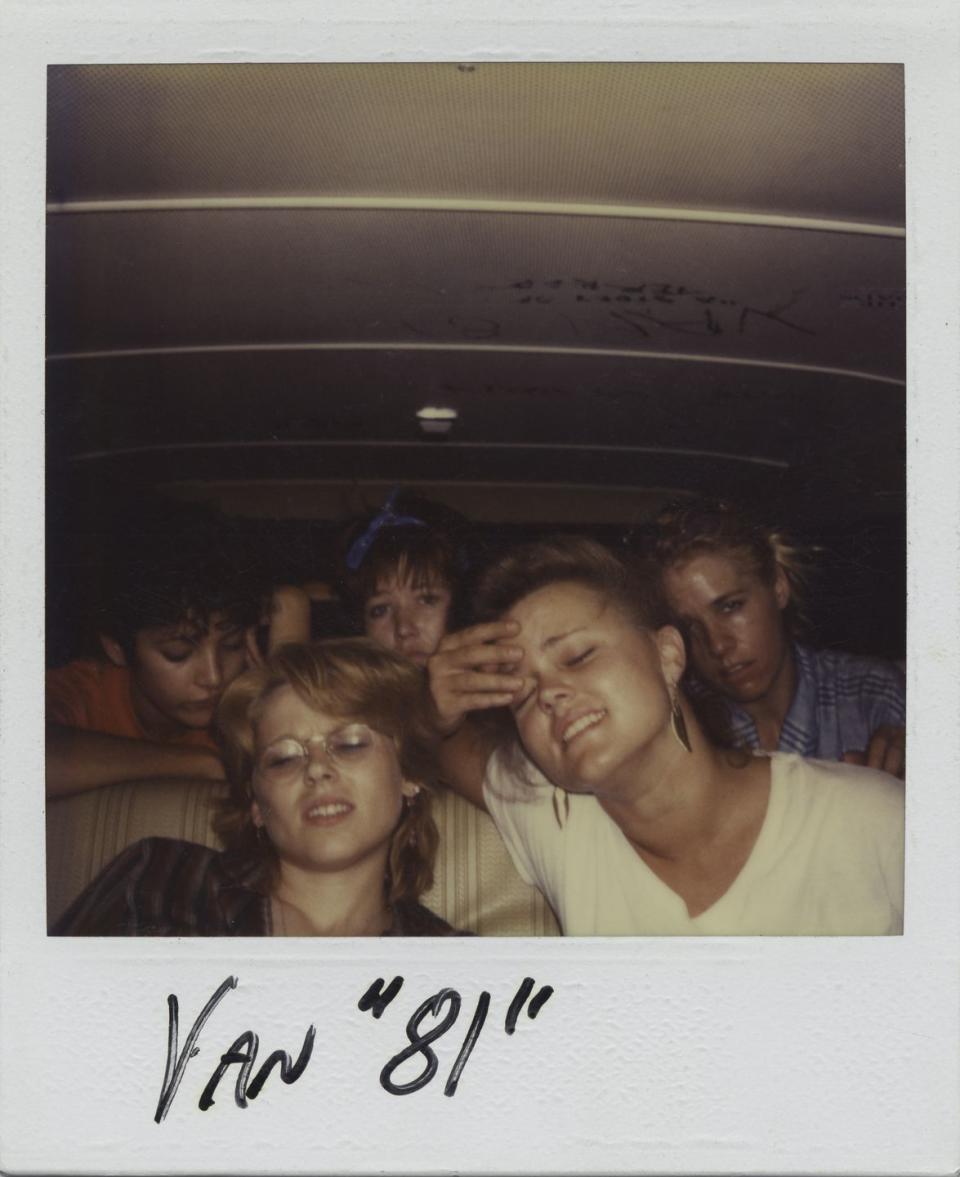
This interview has been edited and condensed for publication.
You Might Also Like

